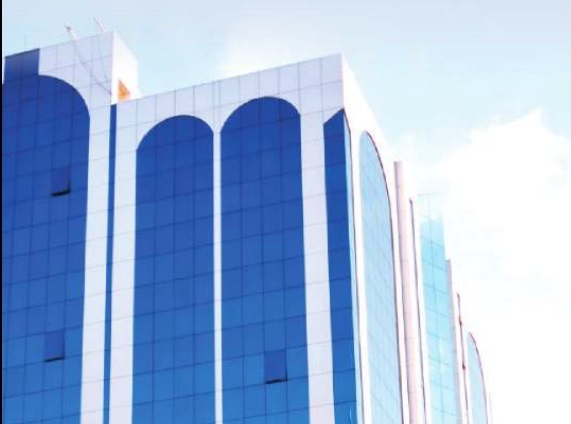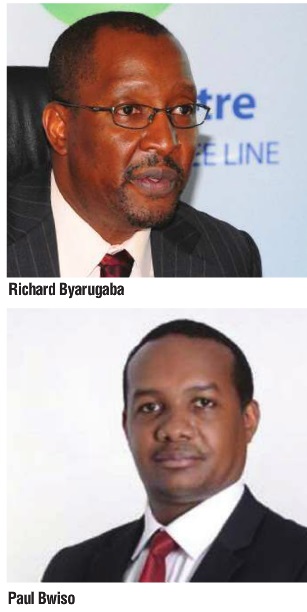
2015/2016 has not been a good year for investors in listed companies on the Uganda Securities Exchange (USE). Given that the National Social Security Fund (NSSF) is the biggest holder of shares in locally-listed companies, there is anxiety. Some 21% of NSSF’s total value is in equities, with 73% in fixed deposits, and 6% in real estate. But with an economy that is registering continued low performance, concern is rising over the Fund’s investment in listed companies, which has been losing value over the last few months.
For example, the Fund’s shares in Stanbic Bank have lost a value of Shs 568 million while those in DFCU have shrunk by Shs 554m and those in New Vision by Shs 109m. In total, NSSF’s shares in locally listed-companies have shed 13% of their value. Additionally, many of the companies have announced a lower dividend per share compared to last year. This has raised fears that for 2016, NSSF might offer a lower interest rate to its members. Last year (2015/16), NSSF paid its members an interest rate of 13% – higher than the 11.5% the Fund paid for 2013/14 and the 11.23% it paid in 2012/13.
NSSF’s stock market woes Anxiety as Fund’s value in locally-listed companies on USE plummets by 13%
Eric Nzibonera, an economics don at the Makerere University College of Business and Management Sciences, says what the USE is experiencing is a bear market with most of the counters on the bourse not all that active. Even those that are active like Stanbic Bank have declared a lower dividend per share and therefore returns from most of these companies to investors (NSSF inclusive) might not be impressive. He however downplays fears that this would substantially affect NSSF’s overall net income.
“The effect of investing in companies listed on USE to the rate given to savers on NSSF will depend on the proportion of NSSF investments in these companies compared to the whole investment portfolio. However, most of NSSF investments are in government and other corporate bonds, which are risk free and largely determine the rate of interest given to savers,” he says, adding, “This is because return on investment from these opportunities is certain though low and predications can be made of how much money should be expected.”
His colleague, Fred Muhumuza, of the same college, notes that the business environment has generally slowed down and that would affect the NSSF too. Besides, he added, NSSF does not have many options to invest such big monies and has to do with the few but low-yielding entities. “I expect it to begin lowering the expected returns to members in the near future,” he says, adding, “That said, the Fund has to be very careful not to lose value for members, which is very likely because chances of losing workers’ money can be quite high.”
Stephen Kaboyo, the managing partner at the Alpha Capital Partners, an investment advisory firm, also appeared to downplay fears of lower income for members but blamed the government for the gloom in the stock market. “For most of last year, the equities market was overshadowed by the government securities market that was offering very high yields. NSSF needs to re-evaluate their investment strategies, pursue more diversification by exploring opportunities that may not exist in the domestic market,” he said.
He added that over the years, the rate of growth of the assets in NSSF has been quite high. While assets have grown exponentially, the investment policy has remained very conservative, more skewed to fixed income investments and fixed deposits in commercial banks. The high yields in government securities have provided a consistent and reliable cash flow stream for the Fund. Equity participation has not been as strong given the perceived risks by the stakeholders.
“The return on equity has been slightly above inflation, but still not good enough given that there are investment opportunities out there that provide a risk adjusted return that NSSF could pursue,” he added.
He strongly suggested that active portfolio management should be encouraged where professional fund managers are engaged to invest the fund’s assets. The important point here is that NSSF would benefit from the investment philosophies and expertise of these asset managers who comb different markets that offer a wide range of sectors. In addition, a case needs to be made to allow NSSF to directly invest and participate in specific productive investments i.e government-related infrastructure projects that provide a descent return with the caveat that these projects provide a risk adjusted return.

As an alternative, Nzibonera suggested that investment in real estate is good depending on the proper evaluation of the place where such investment will be and clear cash flow predictions. It is also a risky venture but if made properly, higher returns can be generated.
“To me, all the three types of investments are fine i.e stocks, real estates and bonds/treasury bills. However, the proportion of each of the alternatives should be well-thought. My prediction is that a high proportion of NSSF investments are in risk-free investments (Bonds and Treasury bills) and if so, it is one that is likely to have a greater impact on the rate of interest that is likely to be given to members for 2016/2017,” he said.
Richard Byarugaba, the NSSF CEO, admitted that there was a bear market situation but was optimistic that it would improve. “Yes, the counters are making losses and this is happening globally. In the case of Uganda, the economy was negatively affected by the elections. Also some Ugandan companies have been having local challenges. On the international scene, market players have been affected by Brexit. What people need to know is that we have not sold any shares and when the market picks up things will get better because as you know all markets go up and down.”
Paul Bwiso, the USE CEO, was also optimistic. “The rebounding of the market is hinged on the market fundamentals. If you look at the government paper, the 91-364 day interest rates range from 15.5- 17.5% meaning investor interest is high in that segment than in stocks. We have seen BoU reduce its CBR, which is very positive meaning if it further reduces the CBR, commercial bank interest rates will come down thus stimulating marketing activity.”
He added that USE`s current challenge is that the market has just come out of an election and government spending is still curtailed. “However, we are optimistic that soon companies will be announcing half year results, which we expect to yield good results.”
“Globally, there is uncertainty as a result of the Brexit. Many investors are holding on to see what comes next and this is impacting on the USE because as you may be aware over 90% of our investors are offshore investors.”
On NSSF, Bwiso said the deciding factor lies with their investment managers but “NSSF has always made good returns being a long-term investor.”
At the close of the trading year ended Dec. 2015, the USE revealed that traded shares were valued at Shs 187 billion representing a dip of 60% from Shs 466 billion traded in 2014.
NSSF market values for local shares in 2016 & 2015
| Company | Total Shares | June 2016 value | June 2015 value | Difference |
| Stanbic Bank | 94,758,530 | 2.558 bn | 3.127 bn | -568.5mn |
| Umeme | 2,143,164 | 1.06 bn | 1.007 bn | +53. mn |
| NVL | 2,185,857 | 1.202 bn | 1.311 bn | -109.2mn |
| Dfcu | 5,435,580 | 4.348 bn | 4.902 bn | -554.4 mn |
| Uganda Clays | 9,575,568 | 124.48 mn | 172.36mn | -47.8mn |
| Bank of Baroda | 12,525,000 | 1.728 bn | 1.628 bn | -100.2mn |
Share prices of local companies 2015/2016
| Company | Share price (June 30, 2016) | Share price (June 30, 2015) | difference |
| Stanbic Bank | 27.00 | 33 | -6 |
| DFCU | 850.00 | 902 | -52 |
| DFCU | 560.00 | 600 | -40 |
| Umeme | 530.00 | 470 | +60 |
| Uganda Clays | 15.00 | 18 | -3 |
| BOBU | 142.00 | 130 | +12 |
| BATU | 30,000.00 | 8,525 | +21,475 |
 The Independent Uganda: You get the Truth we Pay the Price
The Independent Uganda: You get the Truth we Pay the Price



